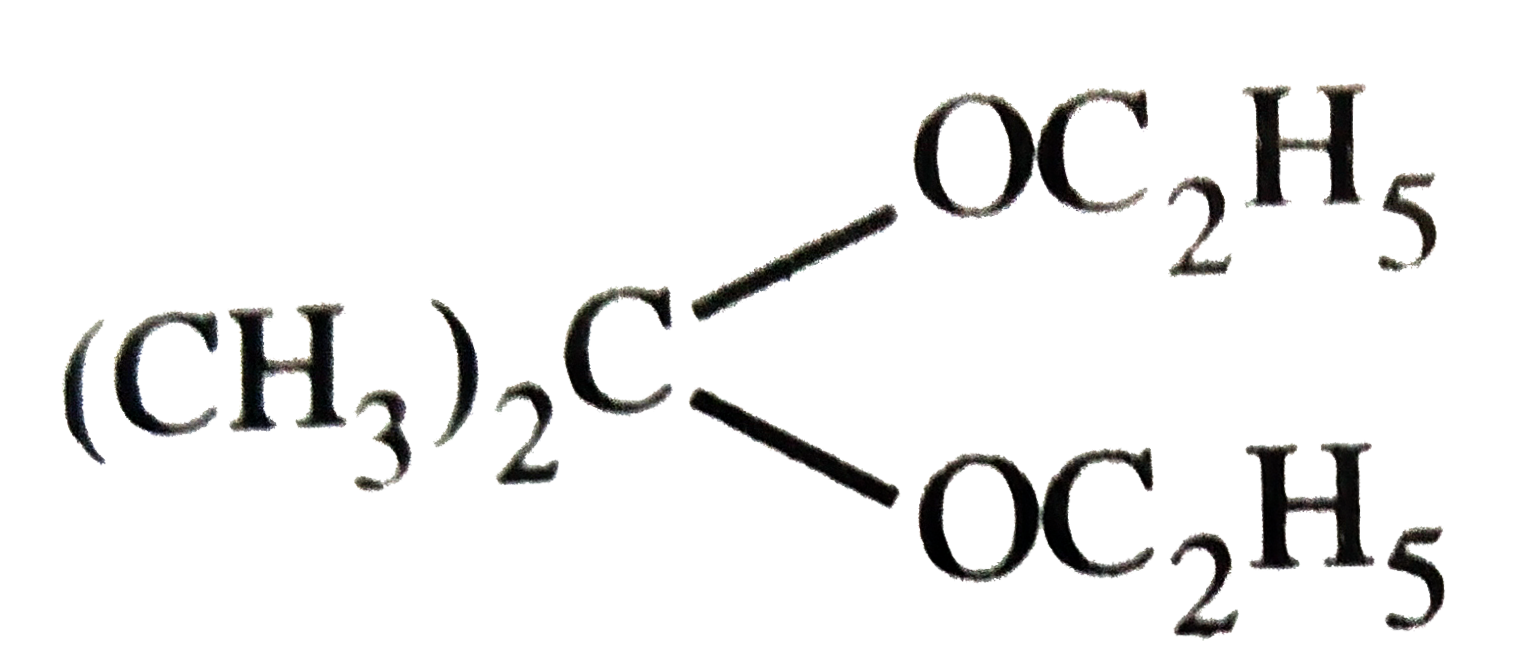Three molecules of acetone in the presence of dry HCl form :
Mesitylene
Phorone
Glyoxal
Mesity oxide
The correct Answer is:B
To solve the problem of what three molecules of acetone form in the presence of dry HCl, we can follow these steps:
Step 1: Understand the Structure of Acetone
Acetone (C₃H₆O) has the structure CH₃COCH₃. Each molecule has a carbonyl group (C=O) flanked by two methyl groups (CH₃).
Step 2: Identify the Reaction Conditions
The reaction occurs in the presence of dry HCl. Dry HCl acts as a catalyst and facilitates the condensation reaction between the acetone molecules.
Step 3: Condensation Reaction
When three molecules of acetone react, they undergo a condensation reaction. This involves the formation of a new bond between the carbonyl carbon of one acetone molecule and the alpha carbon of another acetone molecule, resulting in the release of water (H₂O).
Step 4: Forming the Intermediate
The reaction can be visualized as follows:
1. One acetone molecule reacts with another, leading to the formation of an intermediate compound.
2. The hydroxyl group (OH) from one acetone and a hydrogen (H) from another acetone combine to form water (H₂O), which is eliminated.
Step 5: Final Product Formation
After the elimination of water, the remaining structure will have a double bond between the carbon atoms, resulting in a compound known as mesityl oxide (4-methylpent-3-en-2-one). The structure can be represented as:
- C₆H₁₀O (C=O and C=C bonds present).
Final Answer
Three molecules of acetone in the presence of dry HCl form mesityl oxide.
---
Acetone (C₃H₆O) has the structure CH₃COCH₃. Each molecule has a carbonyl group (C=O) flanked by two methyl groups (CH₃).
The reaction occurs in the presence of dry HCl. Dry HCl acts as a catalyst and facilitates the condensation reaction between the acetone molecules.
When three molecules of acetone react, they undergo a condensation reaction. This involves the formation of a new bond between the carbonyl carbon of one acetone molecule and the alpha carbon of another acetone molecule, resulting in the release of water (H₂O).
The reaction can be visualized as follows:
1. One acetone molecule reacts with another, leading to the formation of an intermediate compound.
2. The hydroxyl group (OH) from one acetone and a hydrogen (H) from another acetone combine to form water (H₂O), which is eliminated.
After the elimination of water, the remaining structure will have a double bond between the carbon atoms, resulting in a compound known as mesityl oxide (4-methylpent-3-en-2-one). The structure can be represented as:
- C₆H₁₀O (C=O and C=C bonds present).
Three molecules of acetone in the presence of dry HCl form mesityl oxide.
Similar Questions
Knowledge Check
- Question 1 - Select One
When three molecules of acetone condense in presence of dry CHl, the product formed is :
Amesityl oxideBglyoxalCmesityleneDphorone - Question 2 - Select One
Acetone is treated with excess of ethanol in the presence of hydrochloric acid. The product obtained is
ACH3CH2CH2−O∣∣C−CH3BCH3CH2CH2−O∣∣C−CH2CH2CH3C D
D
- Question 3 - Select One
Acetone is treated with excess of ethanol in the presence of hydrochloric acid. The product obtained is
ACH3CH2CH2−O∣∣C−CH3BCH3CH2CH2−O∣∣C−CH2CH2CH3C D
D
Acetone is treated with excess of ethanol in the presence of hydrochloric acid. The product obtained is
View SolutionAcetone is treated with excess of ethanol in the presence of hydrochloric acid. The product obtained is
View SolutionPhenol reacts with acetone in the presence of conc. Sulphuric acid to form a C15H16O2 product. Which of the following compounds is this product ?
View SolutionAcetal is produced by reacting alcohol in the presence of dry HCl with
View SolutionAcetal is produced by reacting an alcohol in the presence of dry HCl with
View Solution

